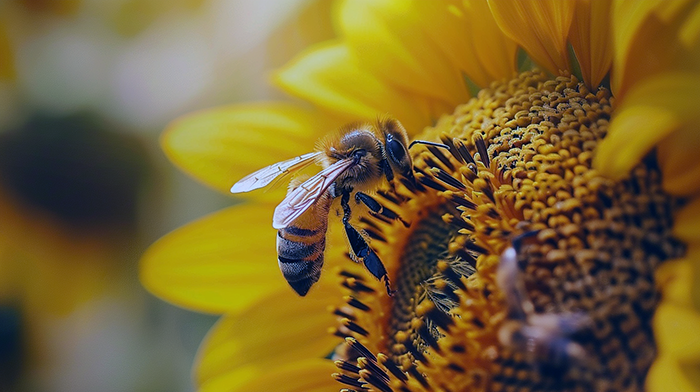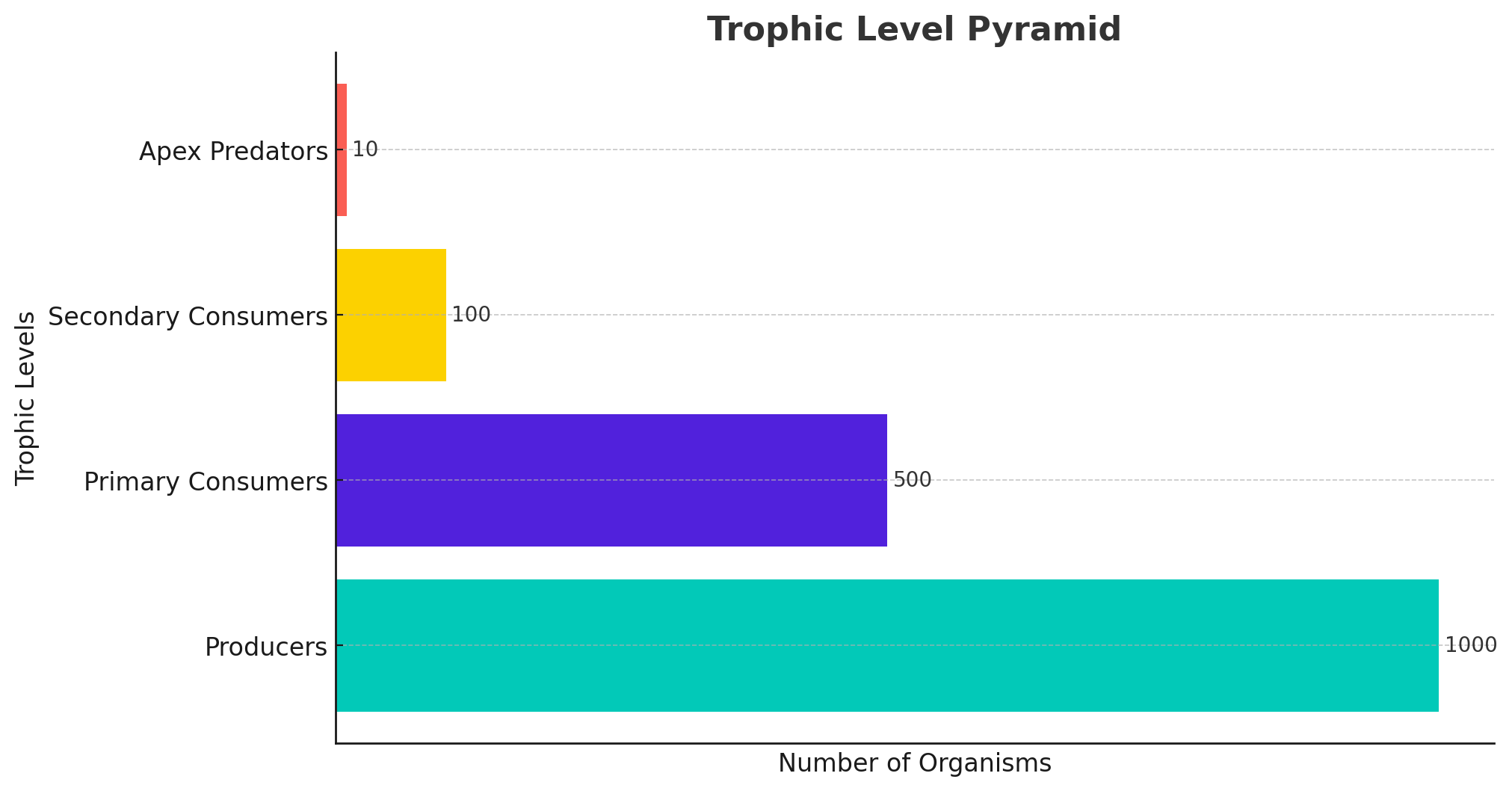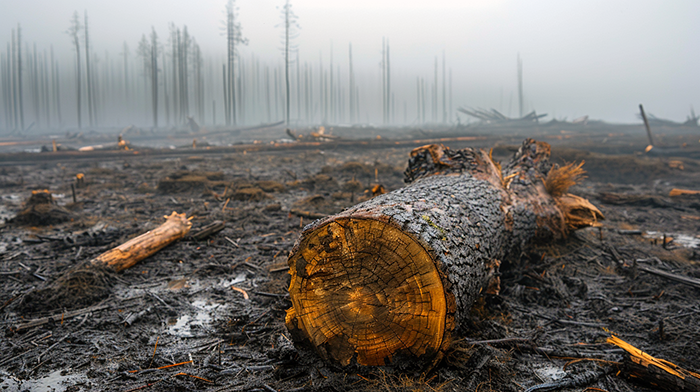What Is a Food Web? Definition, Types, and Examples
A food web involves more than just who eats whom in the wild. It's a complex map that shows how every living thing connects. This includes all creatures, from the smallest insect to the largest predator.
They are all interconnected through what they eat and what eats them. This intricate system goes beyond a simple food chain. It illustrates a network of interactions that supports the balance of entire ecosystems.
Understanding food webs is crucial for appreciating how nature sustains itself. Each web is woven with lines that trace the flow of energy from one organism to another. These connections help maintain ecological balance. They also ensure survival from one generation to the next.
In ecosystems, the stability of food webs is key to supporting diverse species. They demonstrate the vital roles that organisms play. Producers, like plants, make their own food. Apex predators at the top oversee the ecological order. This balance is essential for the health of our planet's varied habitats.
Food webs illustrate the importance of every species, no matter how small. They teach us that every organism has a role that contributes to the wider environmental tapestry. Each one can impact everything from local biodiversity to global ecological health.
A pie chart illustrating the biodiversity across different trophic levels in a food web and the importance of each group in maintaining ecological stability.
Understanding the Basics
Before diving into the intricate details of food webs, it’s essential to understand the basics. There are fundamental differences between simple food chains and the more complex food webs. This foundational knowledge is vital to a complete understanding. It will help us appreciate the depth of interactions and the dynamics within various ecosystems.
Difference between food chains and food webs
A food chain shows a direct nutritional relationship between organisms. It highlights a simple progression from one level to the next. A food web, however, illustrates a complex set of connections that map multiple food chains within an ecosystem. This web displays how different species are interconnected through their feeding habits.
Components of a food web
In every ecosystem, a diverse group of organisms plays specific roles. These roles are critical for maintaining ecological balance. There are three main types: producers, consumers, and decomposers. Let's explore each of these types.
Producers
Producers include any organisms that create their own food using sunlight and basic chemicals. Examples include plants and algae. They form the base of every food web.
Consumers
Consumers in a food web are divided into three groups based on their dietary habits and position in the ecosystem. These groups are primary, secondary, and tertiary consumers. Each group plays a distinct role in transferring energy through the web, from plants up to top predators. By exploring these groups, we gain crucial insights. We can see the complex interactions that sustain biodiversity and ecological balance.
Primary consumers are herbivores that eat producers. They are the second link in the food chain.
Secondary consumers are carnivores. These are specifically those that feed on primary consumers. They rely on herbivores for their nutrition.
Tertiary consumers are predators at the top of the food chain. They hunt both primary and secondary consumers for food. They're credited with maintaining the balance within ecosystems.
Detritivores and Decomposers
Detritivores, like worms and certain insects, consume decaying matter. Decomposers are organisms such as fungi and bacteria. They break down dead organisms, returning nutrients to the soil. Both are crucial for recycling within ecosystems.
A visual representation of the distribution of organisms across different levels: producers form the broad base, and the number of organisms decreases as you move up to apex predators.
Trophic levels explained
Trophic levels categorize organisms based on their position in the food web:
First Level: Producers who make their own food.
Second Level: Primary consumers who eat producers.
Higher Levels: Secondary and tertiary consumers, including various predators.
Each level represents a step in transferring energy and nutrients through an ecosystem. They demonstrate how organisms are linked from the ground up.
Types of Food Webs
Food webs vary greatly across different ecosystems. Each type of food web illustrates unique relationships. It also shows energy transfer processes tailored to its environment. Understanding these distinctions can help us recognize the complexity and adaptability of life.
Terrestrial food webs
Terrestrial food webs occur on land. They encompass environments such as grasslands, forests, and urban areas. These webs can be intricate and extensive. They involve numerous species of plants, herbivores, carnivores, omnivores, and decomposers. Energy flows from the sun to plants. It then transfers from plants to the various animals that eat them. Finally, it continues up the food chain to apex predators.
Aquatic food webs
Aquatic food webs thrive in bodies of water, including oceans, lakes, and rivers. These webs begin with phytoplankton or aquatic plants. They are consumed by small fish and invertebrates. The energy then cascades to larger fish, marine mammals, and other sea creatures. This web illustrates the deep interconnectivity of aquatic life.
Desert food webs
In the harsh conditions of deserts, food webs are simplified but vital. They start with hardy plants like cacti, which conserve water to survive intense heat. These plants support various desert animals, from insects and reptiles to birds and mammals. Each piece of this web is adapted to food and water scarcity.
Forest food webs
Forest food webs are among the richest and most complex due to the dense biodiversity within forest ecosystems. They encompass multiple layers of life, from ground-dwelling decomposers to towering trees. Energy flows from leaves and fruits to a wide array of herbivores. It then moves on to predators, creating a dynamic system of life that supports an extensive range of species.
Examples of Food Webs
Food webs illustrate the interconnectedness of organisms within various ecosystems. Below, we provide examples to showcase how these interactions play out and how energy transfers from one trophic level to another.
Grassland Ecosystem: Here, grasses provide the base to be eaten by insects and small mammals. They are then preyed upon by larger carnivores like foxes and birds of prey.
Coral Reef Ecosystem: Algae and plankton serve as the foundation, supporting a wide range of fish. Fish, in turn, are eaten by larger marine predators such as sharks and rays.
Energy flow in a food web starts with the sun, which is captured by producers like plants. This energy is then transferred:
From plants to herbivores.
From herbivores to carnivores.
Eventually to decomposers, who recycle nutrients back into the system.
The Role of Biodiversity in Food Webs
Biodiversity enriches ecosystems, providing stability and resilience against environmental changes. Diverse species interactions within food webs are crucial for maintaining ecological balance.
Greater species diversity tends to enhance food web stability. It spreads risk and dependency across more species, reducing the impact of any single species' decline or loss.
Keystone species have a more significant effect on their environments relative to their abundance. For example:
Sea otters maintain kelp forest health by preying on sea urchins. The urchins would otherwise overgraze these vital habitats.
Wolves in Yellowstone help control deer populations. This allows various plant species to thrive, supporting a wider range of wildlife.
Challenges to Food Webs
Food webs face various threats that can disrupt their balance and reduce biodiversity. Understanding these challenges is necessary for creating effective conservation strategies.
Human impact on food webs
Human activities, such as overfishing and pollution, affect food webs significantly. These actions can:
Remove key species, disrupting the entire web.
Introduce toxins that accumulate up the food chain, affecting all levels.
Climate change effects
Climate change alters habitats and the availability of resources, impacting food webs globally. Changes include:
Shifting temperature ranges, affecting breeding and feeding patterns.
Rising ocean temperatures, which disrupt marine food webs.
Habitat destruction
The loss of habitats due to deforestation, urbanization, and agriculture is among the most pressing issues. This destruction:
Eliminates the foundational producers of many food webs.
Reduces the overall area where species can live and thrive.
Conservation and the Protection of Food Webs
Conservation efforts are vital for protecting food webs and the ecosystems they support. These efforts focus on maintaining or restoring the natural balance.
Strategies for preserving biodiversity and food webs
Some methods can help us preserve vital food webs. Effective strategies include:
Establishing protected areas to conserve critical habitats.
Promoting sustainable practices that minimize environmental impact.
The role of conservation efforts
Conservation is vital to maintaining the delicate balance of these food webs. It plays a key role in:
Ensuring long-term ecological health.
Supporting the resilience of ecosystems to environmental changes.
Partnering with Eden Green
Eden Green’s sustainability mission is a vital part of everything we do. Our commitment to controlled environment agriculture (CEA) represents a sustainable approach to farming, supporting food web conservation. Our hydroponic systems minimize our impact on local ecosystems.
Eden Green wants to partner with your brand to offer white label hydroponic produce. Our goods help ensure a stable, sustainable supply of produce that supports ecological and business goals alike. Contact our team today to learn more about partnership opportunities.











